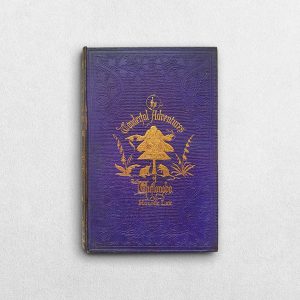Red Indian Chief – Mole-With-The-Piercing-Gaze – Figurines Tintin La Collection Officielle – 41 – Taupe-Au-Regard-Perçant
Hergé & Editions Moulinsart
£100.00
Availability: In stock
Product Description
Red Indian Chief – Mole-With-The-Piercing-Gaze – Figurines Tintin La Collection Officielle – 41 – Taupe-Au-Regard-Perçant
Author: Hergé & Editions Moulinsart
Price: £100.00
Publisher: Editions Moulinsart
Publication date: 2013
Format: Original pictorial boards with passport and figurine
Condition: In near fine condition
Illustrations: Illustrated throughout
Description:
Original pictorial boards. Includes passport loosely inserted. Text in French. Includes the accompanying figurine. One from the collection of 111 books and figurines. Very slight wear. In very near fine, clean condition overall.
The Red Indian Chief: A Short Account
The Red Indian Chief appears in Tintin in America (1932), one of Hergé’s earliest Tintin adventures. Though he is a minor figure in the series, his brief role provides valuable insight into both the development of Hergé’s storytelling and the cultural context of early 20th-century European depictions of Native Americans.
Character Overview
In Tintin in America, Tintin travels to the United States to expose the criminal empire of gangster Al Capone. During his travels, he ventures westward and encounters a group of Native Americans — referred to in the language of the time as “Red Indians.” The tribe’s chief is their leader, shown wearing a feathered headdress and traditional attire, in keeping with the stereotypical imagery of Western films from that period.
The chief’s personality, as Hergé portrays it, reflects dignity and hospitality tempered by suspicion. He welcomes Tintin initially but later turns against him when manipulated by outsiders.
Role in the Story
The Red Indian Chief appears during the middle section of Tintin in America. When Tintin first arrives in the West, he is captured by the tribe but wins their trust by saving the chief’s son. The chief honours him as a friend of the tribe and invites him to share in their traditions.
However, the friendship is short-lived. The villains — white businessmen seeking land for oil drilling — conspire to discredit Tintin. They trick the chief into believing that Tintin has betrayed his people. Deceived, the chief orders Tintin’s capture, and the tribe turns against him. This misunderstanding leads to Tintin’s temporary imprisonment, before the truth is revealed and the hero moves on.
Personality and Portrayal
The Red Indian Chief is drawn with a mixture of authority and nobility, but his characterisation is limited by the conventions of 1930s popular culture. Like many early Hergé figures, he is a caricature, shaped by European stereotypes of Native Americans rather than authentic knowledge of their cultures.
Nevertheless, the chief is not portrayed as foolish or villainous. He is shown as a proud and honourable leader who is deceived by cynical outsiders — a recurring theme in Hergé’s work, where greed and exploitation often come from industrial or political powers.
Symbolism and Context
The episode reflects two key aspects of early Tintin:
- Adventure and Discovery: The chief represents the “exotic frontier” that fascinated European audiences at the time, echoing Western cinema’s romanticised vision of Native American life.
- Emerging Social Awareness: Although Hergé initially relied on stereotypes, this episode also hints at his growing awareness of injustice. The tribe’s displacement by oil interests foreshadows the social criticism and moral nuance that would define later works such as The Blue Lotus (1936), where Hergé confronted racial prejudice more directly.
Artistic and Cultural Notes
Hergé’s depiction of the chief reflects his early reliance on second-hand sources — magazine illustrations, film posters, and Western adventure fiction — rather than ethnographic study. The chief’s image, with feathers and ceremonial garb, draws heavily from Hollywood rather than history.
Over time, Hergé acknowledged the limitations of his early representations. In later Tintin stories, he adopted a more respectful and informed approach to foreign cultures. The Red Indian Chief thus marks a stage in his artistic evolution — a bridge between adventure cartooning and the deeper humanism of his mature work.
Legacy
Although the Red Indian Chief appears only briefly, his role in Tintin in America remains memorable. He represents the shift in Tintin’s adventures from light-hearted escapades to stories with moral undercurrents — in this case, the exploitation of native peoples and natural resources.
Modern readers often view this episode as a historical artefact rather than a model of cultural accuracy. Yet within Hergé’s creative journey, the chief stands as an early attempt to depict dignity and injustice in a world dominated by greed.
Summary
- First appearance: Tintin in America (1932)
- Role: Leader of a Native American tribe befriended, then deceived, during Tintin’s western travels
- Symbolism: Early portrayal of honour, trust, and betrayal amid colonial exploitation
- Significance: Marks Hergé’s transition from youthful caricature to moral storytelling
Why Buy from Us?
At Hornseys, we are committed to offering items that meet the highest standards of quality and authenticity. Our collection of objects and rare books are carefully curated to ensure each edition is a valuable piece of bibliographical history. Here’s what sets us apart:
- Authenticity and Provenance: Each item is meticulously researched and verified for authenticity and collation.
- Expert Curation: Our selection process focuses on significance, condition, and rarity, resulting in a collection that is both diverse and distinguished.
- Customer Satisfaction: We aim to provide an exceptional customer experience, from detailed descriptions to secure and prompt delivery of your purchase.
- Returns Policy: We offer an unconditional guarantee on every item. If you wish to return an item, it may be sent back to us within fourteen days of receipt. Please notify us in advance if you wish to do so. The item must be returned in the same condition as it was sent for a full refund.
Cataloguer: Daniel Hornsey
Daniel Hornsey has specialised in fine and rare books, ephemera, and collectors’ editions for over thirty years. As a long-standing member of the antiquarian book trade, he has advised private collectors, curated catalogues, and sourced works for leading dealers, libraries and institutions across the world.
Hornseys’ exhibit regularly at book and map fairs in London and throughout the UK and are members of the Provincial Booksellers Fairs Association, the PBFA.
His fascination with Hergé’s work — especially ‘The Adventures of Tintin’ — began in childhood. Daniel recalls reading Tintin in original European editions and quickly recognising that these were not merely children’s books, but finely illustrated narratives crafted with artistic depth and wit.
As noted by the Musée Hergé in Louvain-la-Neuve, Hergé’s ‘ligne claire’ style has influenced generations of European comic artists and his original drawings and paintings command very high prices with his painting of ‘The Blue Lotus’ jar fetching £2.8m at auction in 2021.
By presenting these works through Hornseys’, he hopes to contribute to the continued appreciation of one of the 20th century’s most influential illustrators, helping new generations discover the artistry and legacy of Hergé.
Related products
Paddington Marches On With Card Signed By Michael Bond Loosely Inserted
£545.00Bond, Michael Illustrated By Fortnum, Peggy
The Wonderful Adventures Of Tuflongbo And His Elfin Company: John Leighton Binding
£175.00Lee, Holme pseudonym of Parr, Harriet
E H Shepard, The Man Who Drew Pooh: The Story Of E H Shepard: Signed By The Author
£35.00Chandler, Arthur R
You may also like…
Colonel Sponsz Upset – Figurines Tintin La Collection Officielle – 37 – Le Colonel Sponsz Contrarié
£55.00Hergé & Editions Moulinsart
Monsieur Boullu The Stonemason – Figurines Tintin La Collection Officielle – 35 – Monsieur Boullu Le Marbrier
£40.00Hergé & Editions Moulinsart
Haddock Alpinist – Figurines Tintin La Collection Officielle – 34 – Haddock En Alpiniste
£45.00Hergé & Editions Moulinsart
Calculus The Gardener – Figurines Tintin La Collection Officielle – 28 – Tournesol En Jardinier
£35.00Hergé & Editions Moulinsart
Haddock As Hadoque – Figurines Tintin La Collection Officielle – 24 – Haddock En Hadoque
£45.00Hergé & Editions Moulinsart
Ridgewell The Explorer – Figurines Tintin La Collection Officielle – 23 – Ridgewell L’Explorateur
£45.00Hergé & Editions Moulinsart
Tintin In Kilt – Figurines Tintin La Collection Officielle – 22 – Tintin En Kilt
£65.00Hergé & Editions Moulinsart
King Muskar Puts On His Gloves – Figurines Tintin La Collection Officielle – 20 – Le Roi Muskar Enfile Ses Gants
£45.00Hergé & Editions Moulinsart
Snowy Stuck In The Crab Tin – Figurines Tintin La Collection Officielle – 19 – Milou Coincé Dans La Boîte De Crabe
£45.00Hergé & Editions Moulinsart
Nestor With The Tray – Figurines Tintin La Collection Officielle – 18 – Nestor Au Plateau
£45.00Hergé & Editions Moulinsart
Chang Points Out Hou Kou – Figurines Tintin La Collection Officielle – 8 – Tchang Indique Hou Kou
£35.00Hergé & Editions Moulinsart
Tintin In A Lunar Spacesuit – Figurines Tintin La Collection Officielle – 7 – Tintin En Scaphandre Lunaire
£55.00Hergé & Editions Moulinsart
Snowy Carries His Bone – Figurines Tintin La Collection Officielle – 6 – Milou Promène Son Os
£40.00Hergé & Editions Moulinsart
Castafiore With The Parrot – Figurines Tintin La Collection Officielle – 5 – La Castafiore Au Perroquet
£75.00Hergé & Editions Moulinsart
Thomson Looking Awkward – Figurines Tintin La Collection Officielle – 4 – Dupond Engoncé
£40.00Hergé & Editions Moulinsart
Professor Calculus With A Spade – Figurines Tintin La Collection Officielle – 3 – Tournesol A La Bêche
£40.00Hergé & Editions Moulinsart
Haddock Doubtful – Figurines Tintin La Collection Officielle – 2 – Haddock Dubitatif
£40.00Hergé & Editions Moulinsart
Tintin In Trenchcoat – Figurines Tintin La Collection Officielle – 1 – Tintin En Trench-Coat
£75.00Hergé & Editions Moulinsart
























